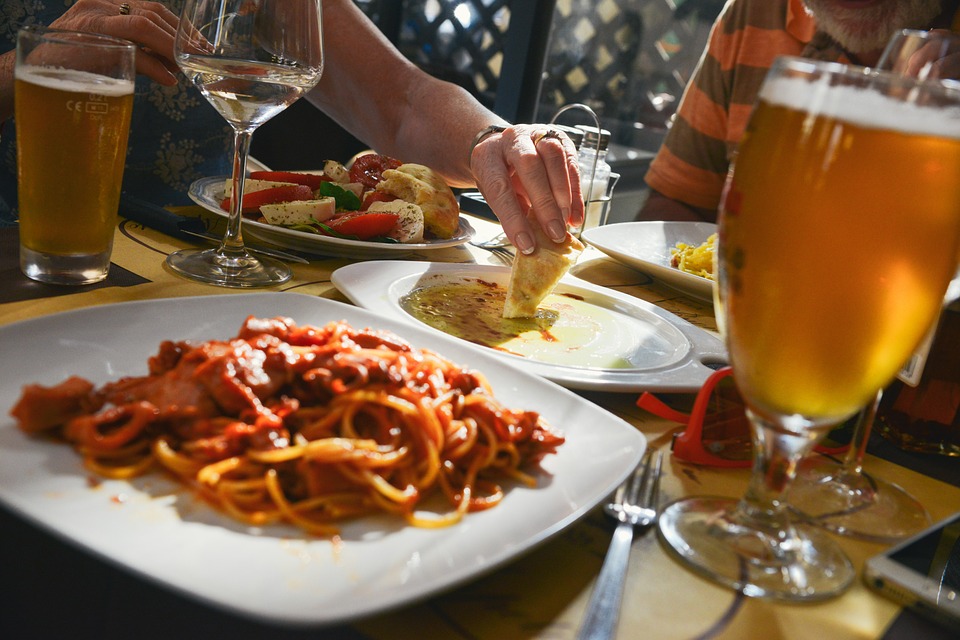First, it’s a bowl of macaroni and a quick chat with your floormate. Then, it’s a slice of pizza while you talk to your classmate. And then, it’s another few helpings of pasta as you describe your New Year’s plans with your friend. Calories can add up quickly: one serving of eggnog alone is 400 calories (a daily calorie requirement might be around 1800-2000). By the end of the night, you’ve consumed twice as much as you normally would alone. Eating more on certain occasions is fine until it becomes uncomfortable. Overeating might lead to nausea, heartburn, and weight gain. This phenomenon of social eating, especially noticeable around the holiday season, results from social influence.
Image Source: Thomas Barwick
While economic factors like cost and availability, biological factors like hunger, and psychological factors like stress commonly affect food consumption choices, social influences also play a role.
Whether consciously or subconsciously, research has found that people are increasingly eating for pleasure rather than necessity and that the presence of others around them also affects how much people eat. For example, a mother encouraging a child to eat more vegetables is a direct, conscious influence, while a group of friends sharing a pizza at 10 p.m. is an indirect, subconscious influence. Another example is that people usually wait for someone, such as the host, to begin eating before starting as well.
Beliefs and susceptibility to social pressures might also affect the impact of social factors on eating patterns. According to researchers, we eat to impress peers. Moreover, if a friend eats a lot, a person will be more likely to eat more and vice versa. In fact, the closer the group of friends and the larger the group, the more people will eat.
Gender also influences the eating patterns in a group. Women eat less around men, a difference researchers attribute to possible concern about making a good impression. Conversely, men ate 93 percent more. The differences might also be influenced by stereotypes that men eat more and women less.
Researchers suggest that despite the definite trends in social eating, awareness of these tendencies can counter the social pressures and that people can eat healthier by being more aware of how much they are eating.
Feature Image Source: stokpic










